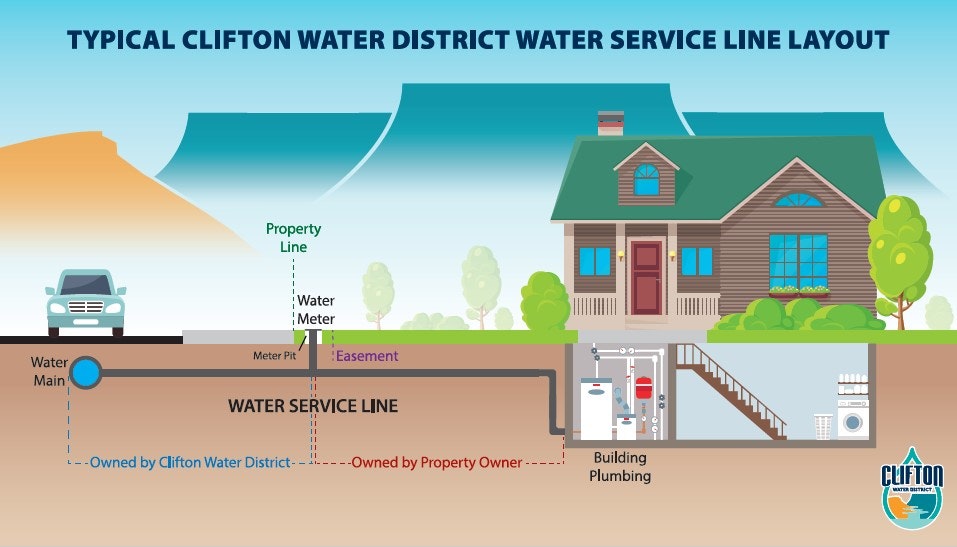Service Line Inventory Project
Service Line Inventory
On December 16, 2021, the Environmental Protection Agency (EPA) finalized revisions to the Lead and Copper Rule. The goal of this rule is to further protect public health from lead in drinking water. The rule requires public water systems to inventory and classify materials of service lines and if found, remove lead services from their distribution systems. This also involves identifying the service line material on the property owner’s side of the water meter.
The Safe Drinking Water Act officially banned the use of lead in plumbing in 1986. However, there is a lot of evidence, especially in Colorado, that the use of lead service lines ceased being installed much earlier.
What is the Water Service Line?
The water service line is what supplies your home or business with water. The water main is located out in the street, and a smaller pipe that is tapped into the water main is routed towards the property to a meter pit. The water line past the meter is owned by the property owner.

Clifton Water Service Lines
Clifton Water District was established in 1951 and did not begin installing water services until the late 1950s. There are no records of Clifton Water installing lead service lines. The District traditionally installed black polyethylene tubing to establish water service.
Clifton Water has a black poly service line replacement program in which these older services are replaced with copper. The replacement program as well as maintaining records of leak repairs on service lines has assisted with verifying the absence of lead.
What action is Clifton Water District taking?
Clifton Water is now investigating service lines for homes built prior to 1988 to verify the absence of lead. Historically, Clifton Water has never installed lead service lines, however the homeowner’s side of the service line will need to be verified. The service line materials will be documented either by historical repair/replacement records, or visually through inspection.
The inspection will involve excavating a small hole, known as potholing, on each side of the meter pit to confirm the line material. This takes place within Clifton Water's easement for the service line and will be backfilled and repaired.
I received a door hanger for an inspection, what do I need to do?
If you received a door hanger for an inspection, this means that we could not confirm service line materials through historical records and will need to perform a visual inspection by potholing near the meter pit.
If you have documentation on the water service line materials (recently repaired/replaced), or would like to send us a picture of the water line at the first connection within your home, that would be an alternative to digging a pothole outside near the meter. If you would like to submit documentation or photos, send them to leadID@cliftonwaterdistrict.org. You could also use the "Contact Us" section of our website at or call us @ 970-434-7328.
Where is the first connection for water in my home?
Crawl space/basement – The water service line coming from the main line in the street is generally buried deep to avoid freezing. If your home has a crawl space or basement, the service line will enter your home there for the first connection to indoor plumbing.
Slab – If your home was built on a slab, the service line will usually enter the home in a utility room or generally near the hot water heater where there is a main shutoff valve.
How can I determine what materials my water line is coming into my home?
We encourage our customers to assist with our efforts to confirm the absence of lead service lines! Please let us know if you have supporting documentation on the service line such as repairs/replacements or provide pictures of the first connection to interior plumbing.
How to determine what material the water line is:
· If the line is dirty or discolored, scrape a small area to get to the material. If it is copper in color, then this is a copper service.
· If the line is a gray color and appears to be metal, see if a magnet is attracted to the surface. If a magnet sticks, this is consistent with galvanized steel.
· If a scraped section is a shiny silver and a magnet does not stick to the pipe, this is likely lead.
· The service line may be plastic and is easy to identify.
Sending us information helps us eliminate your service line for verification and could avoid potholing! If you would like to submit information, or need help identifying materials of your water line, please email us leadID@cliftonwaterdistrict.org or call us @ 970-434-7328
